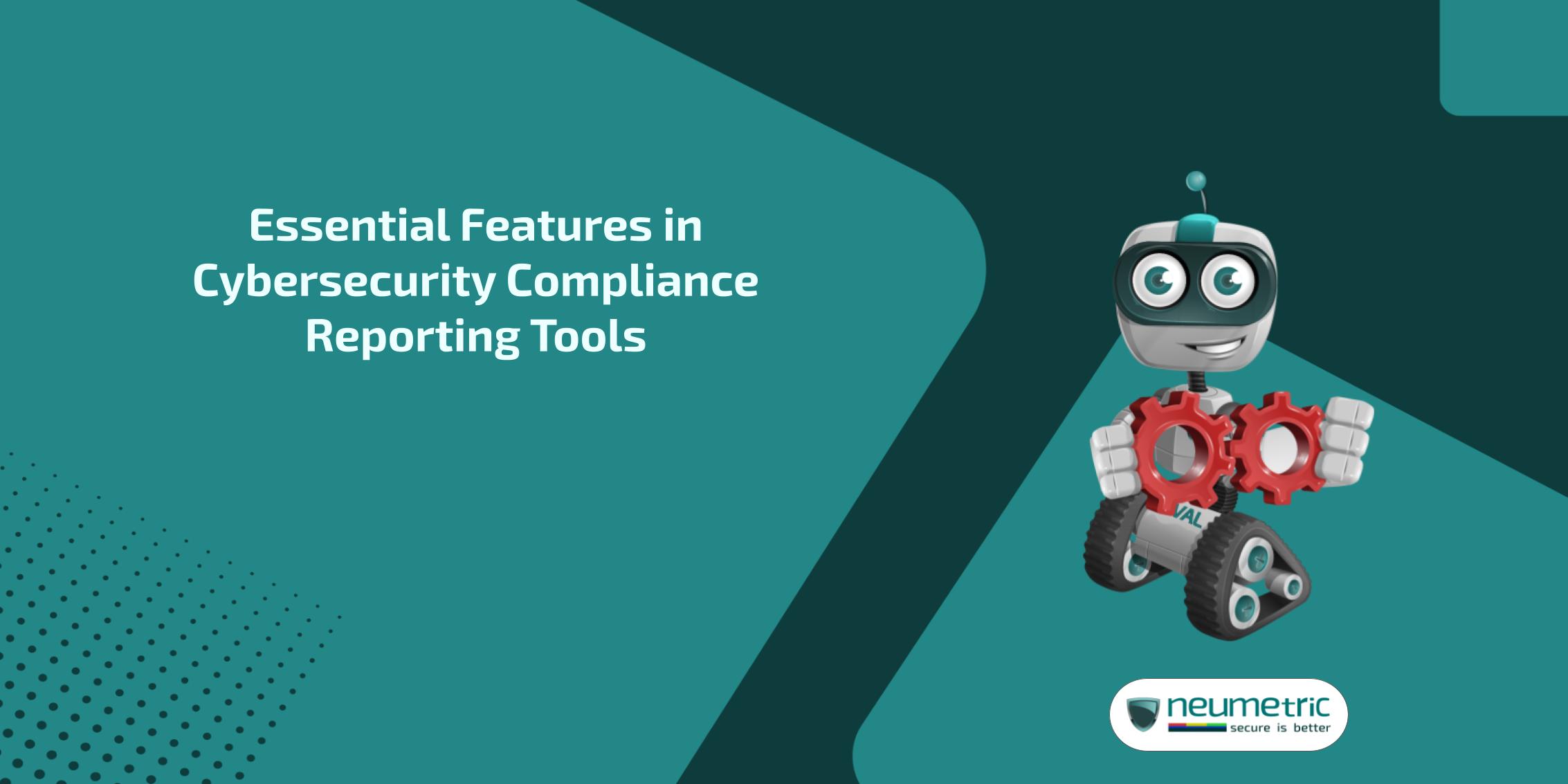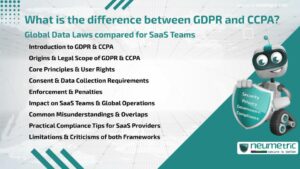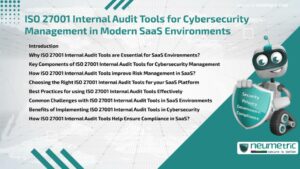Table of Contents
ToggleIntroduction
In the ever-evolving realm of cybersecurity, where threats lurk at every digital corner, organizations are faced with the daunting task of ensuring compliance with a myriad of regulations & industry standards. Failure to adhere to these guidelines can result in severe consequences, ranging from hefty fines to irreparable reputational damage. It is within this context that cybersecurity compliance reporting tools have emerged as indispensable allies, empowering organizations to navigate the intricate web of compliance requirements with confidence & precision.
The Imperative of Comprehensive Compliance Reporting
Cybersecurity compliance is no longer a mere box-ticking exercise; it is a strategic imperative that resonates across every facet of an organization’s operations. From safeguarding sensitive data to mitigating the risk of costly breaches, effective compliance reporting plays a pivotal role in fortifying an organization’s defenses against the ever-evolving threat landscape.
Regulatory Mandates: A Maze of Requirements
Organizations operating in today’s digital age are subject to a labyrinth of regulatory mandates, each with its own set of stringent requirements. These mandates span diverse domains, including data privacy (GDPR, CCPA), industry-specific standards (PCI-DSS, HIPAA) & overarching frameworks (NIST, ISO 27001). Failure to comply with these regulations can result in severe financial penalties, legal ramifications & irreparable damage to an organization’s reputation.
Streamlining Compliance Efforts
Effective cybersecurity compliance reporting tools serve as a powerful catalyst, streamlining the compliance efforts of organizations by automating the collection, analysis & reporting of relevant data. By consolidating disparate sources of information into a centralized repository, these tools provide a comprehensive view of an organization’s compliance posture, enabling proactive identification & mitigation of potential vulnerabilities.
Essential Features of Robust Cybersecurity Compliance Reporting Tools
As the stakes continue to rise in the realm of cybersecurity, organizations must equip themselves with robust compliance reporting tools that possess a comprehensive array of features. These features not only facilitate compliance efforts but also empower organizations to stay ahead of the curve in an ever-changing threat landscape.
Automated Data Collection & Aggregation
At the core of any effective cybersecurity compliance reporting tool lies the ability to seamlessly collect & aggregate data from diverse sources, including network devices, servers, workstations & security appliances. This automated data collection process eliminates the need for manual intervention, ensuring timely & accurate capture of relevant information.
Compliance reporting tools should be capable of integrating with a wide range of data sources, such as log files, configuration management databases, vulnerability scanners & Security Information & Event Management [SIEM] systems. By leveraging these diverse data sources, organizations can gain a comprehensive understanding of their cybersecurity posture, enabling them to identify potential gaps or areas of non-compliance.
Real-time Monitoring & Alerting
Cybersecurity threats are constantly evolving & organizations must remain vigilant to detect & respond promptly to potential breaches. Robust compliance reporting tools offer real-time monitoring capabilities, continuously scanning for deviations from established policies & generating alerts when anomalies are detected. This proactive approach empowers organizations to take swift action, minimizing the impact of potential incidents.
Real-time monitoring should encompass various aspects of an organization’s cybersecurity infrastructure, including network traffic patterns, user activity, system configurations & security control implementations. By continuously analyzing these elements, compliance reporting tools can promptly identify potential vulnerabilities, policy violations or suspicious activities, enabling organizations to respond swiftly & mitigate risks.
Comprehensive Reporting & Visualization
Compliance reporting tools must provide comprehensive & customizable reporting capabilities, enabling organizations to generate detailed reports tailored to specific regulatory requirements. These reports should not only present raw data but also offer insightful visualizations, such as dashboards & trend analyses, to facilitate better decision-making & risk management.
Effective reporting should include both high-level overviews & granular details, catering to the needs of different stakeholders within the organization. Executive-level reports should provide concise summaries & key performance indicators, while technical teams may require more in-depth analyses & detailed logs. Furthermore, the ability to generate reports in various formats, such as PDF, Excel or HTML, enhances accessibility & facilitates seamless integration with existing workflows.
Policy & Workflow Management
Effective compliance management extends beyond mere reporting; it necessitates the ability to define, implement & enforce organizational policies & workflows. Robust compliance reporting tools should offer intuitive interfaces for policy creation & management, ensuring consistent adherence to established guidelines across the organization.
Policy management features should enable organizations to define & maintain a centralized repository of security policies, standards & control objectives. These policies should be easily accessible & clearly communicated to all relevant stakeholders, fostering a culture of compliance & accountability within the organization.
Furthermore, compliance reporting tools should support the automation of workflows related to policy enforcement, incident response & remediation efforts. By streamlining these processes, organizations can ensure timely & consistent actions are taken in response to identified compliance issues, reducing the risk of potential breaches or regulatory violations.
Integration & Interoperability
In today’s interconnected business landscape, organizations often rely on a myriad of security tools & platforms. Seamless integration & interoperability with these existing systems are crucial for compliance reporting tools, enabling streamlined data exchange & eliminating the need for manual intervention or data duplication.
Compliance reporting tools should be designed to seamlessly integrate with a wide range of security solutions, such as firewalls, Intrusion Detection & Prevention Systems [IDS/IPS], vulnerability management tools & Identity & Access Management [IAM] platforms. This integration allows for centralized data collection, correlation & analysis, providing a comprehensive view of an organization’s cybersecurity posture.
Moreover, compliance reporting tools should support industry-standard protocols & data formats, facilitating interoperability with third-party applications & enabling efficient data sharing with external stakeholders, such as auditors or regulatory bodies.
Scalability & Flexibility
As organizations grow & their compliance requirements evolve, their cybersecurity compliance reporting tools must possess the scalability & flexibility to adapt to changing needs. These tools should be capable of accommodating increasing volumes of data, integrating new technologies & adapting to emerging regulatory frameworks without compromising performance or functionality.
Scalability is crucial, as organizations may experience rapid growth in terms of users, devices & data sources. Compliance reporting tools should be able to handle these increasing demands without sacrificing reporting accuracy or timeliness. Additionally, the ability to scale horizontally by adding additional computing resources or distributed processing capabilities can further enhance performance & ensure uninterrupted compliance monitoring.
Flexibility is equally important, as the cybersecurity landscape is constantly shifting. Compliance reporting tools should be designed with an open & extensible architecture, allowing for the integration of new data sources, the incorporation of updated regulatory requirements & the adaptation to emerging technologies or industry-specific standards.
Crafting an Effective Compliance Reporting Strategy
While robust compliance reporting tools are essential, their effectiveness is contingent upon a well-crafted compliance reporting strategy tailored to the unique needs & requirements of an organization. This strategy should encompass the following key elements:
Defining Clear Objectives & Scope
Before embarking on the journey of compliance reporting, organizations must clearly define their objectives & the scope of their compliance efforts. This involves identifying the relevant regulations, industry standards & organizational policies that must be adhered to, as well as the specific systems, processes & data that fall within the purview of compliance.
By establishing clear objectives & scoping boundaries, organizations can ensure that their compliance reporting efforts are focused & aligned with their business priorities. This clarity also helps to prioritize resources & investments, enabling organizations to allocate appropriate budgets & personnel to support their compliance initiatives.
Establishing Roles & Responsibilities
Effective compliance reporting relies on a collaborative effort involving various stakeholders across the organization. Clearly defined roles & responsibilities are crucial, ensuring that each team member understands their specific tasks & accountability. This includes designating compliance officers, data owners & subject matter experts who will contribute their expertise throughout the process.
For example, compliance officers may be responsible for overseeing the overall compliance program, interpreting regulatory requirements & ensuring that the organization adheres to relevant standards. Data owners, on the other hand, may be tasked with maintaining the integrity & security of specific data assets, while subject matter experts provide guidance on technical implementations & best practices.
By establishing well-defined roles & responsibilities, organizations can foster a culture of accountability & ensure that compliance efforts are coordinated & effective across all levels of the organization.
Developing Comprehensive Policies & Procedures
A robust compliance reporting strategy necessitates the development of comprehensive policies & procedures that govern the entire compliance process. These policies should outline the specific actions to be taken, the frequency of reporting & the mechanisms for incident response & remediation. By establishing clear guidelines, organizations can ensure consistency & adherence across all levels of the organization.
Effective policies & procedures should cover a range of areas, including data classification & handling, access controls, risk management processes, incident response protocols & employee training & awareness programs. These policies should be regularly reviewed & updated to reflect changes in regulatory requirements, technological advancements & evolving cybersecurity threats.
Furthermore, the development of policies & procedures should involve input from various stakeholders, such as legal & compliance teams, IT professionals & business leaders. This collaborative approach ensures that the policies are practical, enforceable & aligned with the organization’s overall goals & objectives.
Continuous Monitoring & Improvement
Compliance is not a one-time endeavor; it is an ongoing process that requires continuous monitoring & improvement. Organizations must regularly assess the effectiveness of their compliance reporting tools & strategies, adapting to changes in the threat landscape, regulatory environment & organizational requirements. This iterative approach fosters a culture of continuous improvement, ensuring that an organization’s compliance efforts remain relevant & effective.
Continuous monitoring should involve regular reviews of compliance reports, risk assessments & security audits. Organizations should also establish mechanisms for gathering feedback from stakeholders, including employees, customers & regulatory bodies, to identify areas for improvement & address emerging concerns.
Additionally, organizations should stay informed about changes in regulatory frameworks, industry standards & best practices. This knowledge can be leveraged to refine compliance reporting processes, update policies & procedures & implement necessary changes to ensure ongoing compliance.
Embracing a Proactive Approach to Cybersecurity Compliance
In the realm of cybersecurity, a reactive approach is no longer sufficient. Organizations must adopt a proactive mindset, actively seeking to identify & mitigate potential vulnerabilities before they can be exploited. Robust cybersecurity compliance reporting tools play a pivotal role in this proactive approach, enabling organizations to:
Identify & Address Gaps in Compliance
By leveraging the comprehensive reporting capabilities of these tools, organizations can identify gaps in their compliance posture & proactively address them. This proactive approach ensures that potential vulnerabilities are addressed before they can be exploited by threat actors, minimizing the risk of costly breaches & regulatory violations.
Compliance reporting tools can provide detailed insights into an organization’s adherence to specific regulatory requirements, industry standards & internal policies. By analyzing these reports, organizations can pinpoint areas of non-compliance, such as outdated software versions, misconfigured systems or inadequate access controls. Armed with this information, organizations can prioritize remediation efforts & implement necessary controls to close identified gaps, reducing their overall risk exposure.
Continuously Monitor & Assess Risk Posture
Cybersecurity threats are constantly evolving & organizations must remain vigilant in monitoring & assessing their risk posture. Compliance reporting tools provide real-time insights into an organization’s cybersecurity posture, enabling proactive identification & mitigation of emerging risks.
By continuously monitoring & analyzing data from various sources, such as network traffic logs, user activity logs & vulnerability scan results, compliance reporting tools can detect potential threats or anomalies in real-time. This proactive approach allows organizations to quickly respond to emerging risks, implement appropriate countermeasures & potentially prevent successful attacks or data breaches.
Furthermore, compliance reporting tools can facilitate the integration of threat intelligence feeds, enabling organizations to stay informed about the latest cybersecurity threats & vulnerabilities. This intelligence can be used to proactively update security controls, patch systems & adjust policies to maintain a robust defense against evolving threats.
Foster a Culture of Continuous Improvement
By embracing a proactive approach to compliance reporting, organizations can foster a culture of continuous improvement within their cybersecurity practices. This culture encourages ongoing learning, adaptation & refinement of processes, ensuring that an organization’s defenses remain robust & effective in the face of an ever-changing threat landscape.
Regular compliance reporting & risk assessments can reveal areas for improvement, such as outdated technologies, inefficient processes or gaps in employee training & awareness programs. By proactively addressing these issues, organizations can enhance their overall cybersecurity posture & stay ahead of emerging threats.
Additionally, a proactive approach fosters collaboration & knowledge-sharing among various stakeholders, including IT professionals, security teams, compliance officers & business leaders. This cross-functional collaboration can lead to the identification of innovative solutions, the adoption of industry best practices & the development of more effective strategies for maintaining compliance & mitigating risks.
Conclusion
In the ever-evolving landscape of cybersecurity, where threats lurk at every digital corner, maintaining compliance with regulatory mandates & industry standards is paramount. Cybersecurity compliance reporting tools have emerged as indispensable allies, empowering organizations to navigate the intricate web of compliance requirements with confidence & precision.
These robust tools offer a comprehensive suite of features, including automated data collection & aggregation, real-time monitoring & alerting, comprehensive reporting & visualization capabilities, policy & workflow management, seamless integration & interoperability & scalability & flexibility to adapt to changing needs.
By crafting an effective compliance reporting strategy that defines clear objectives, establishes roles & responsibilities, develops comprehensive policies & procedures & fosters a culture of continuous improvement
Key Takeaways
As organizations navigate the complex landscape of cybersecurity compliance, robust reporting tools become indispensable assets. By implementing these tools & adopting a proactive approach, organizations can unlock numerous benefits, including:
- Streamlined compliance efforts through automated data collection, analysis & reporting.
- Real-time monitoring & alerting, enabling swift identification & mitigation of potential compliance issues.
- Comprehensive reporting & visualization capabilities, facilitating informed decision-making & risk management.
- Effective policy & workflow management, ensuring consistent adherence to established guidelines across the organization.
- Seamless integration & interoperability with existing security tools & platforms, enabling streamlined data exchange.
- Scalability & flexibility to adapt to evolving compliance requirements & organizational needs.
- Proactive identification & addressing of gaps in compliance posture.
- Continuous monitoring & assessment of risk posture, enabling timely response to emerging threats.
- Fostering a culture of continuous improvement in cybersecurity practices.
By embracing these powerful tools & adopting a strategic compliance reporting strategy, organizations can fortify their defenses, mitigate risks & demonstrate their commitment to upholding the highest standards of cybersecurity compliance.
Frequently Asked Questions [FAQ]
What is the primary purpose of cybersecurity compliance reporting tools?
The primary purpose of cybersecurity compliance reporting tools is to assist organizations in adhering to various regulatory mandates, industry standards & organizational policies related to cybersecurity. These tools automate the process of collecting, analyzing & reporting relevant data, enabling organizations to monitor their compliance posture & identify potential vulnerabilities or deviations from established guidelines.
How do compliance reporting tools differ from traditional security tools?
While traditional security tools primarily focus on detecting & mitigating cyber threats, compliance reporting tools are designed to ensure that an organization’s cybersecurity practices & processes align with applicable regulations & standards. These tools provide comprehensive reporting capabilities, enabling organizations to demonstrate their compliance efforts to regulatory bodies, auditors & other stakeholders.
What are the key benefits of using cybersecurity compliance reporting tools?
The key benefits of using cybersecurity compliance reporting tools include:
- Automated data collection & aggregation, reducing manual effort & minimizing errors
- Real-time monitoring & alerting, enabling proactive identification & mitigation of potential compliance issues
- Comprehensive reporting & visualization capabilities, facilitating better decision-making & risk management
- Policy & workflow management, ensuring consistent adherence to established guidelines
- Integration & interoperability with existing security tools & platforms, enabling streamlined data exchange
How can organizations ensure the effectiveness of their compliance reporting strategy?
To ensure the effectiveness of their compliance reporting strategy, organizations should:
- Clearly define their objectives & the scope of their compliance efforts
- Establish well-defined roles & responsibilities for all stakeholders
- Develop comprehensive policies & procedures to govern the compliance process
- Continuously monitor & improve their compliance efforts, adapting to changes in the threat landscape, regulations & organizational requirements
What are the key challenges organizations face in implementing cybersecurity compliance reporting tools?
Some of the key challenges organizations may face when implementing cybersecurity compliance reporting tools include:
- Integrating with existing security tools & platforms, ensuring seamless data exchange & interoperability
- Managing large volumes of data from multiple sources, requiring robust data processing & storage capabilities
- Keeping up with evolving regulatory requirements & industry standards, necessitating frequent updates & adaptations
- Ensuring user adoption & compliance with established policies & procedures across the organization
- Allocating adequate resources, including budgets, personnel & training, to support effective compliance reporting efforts.





